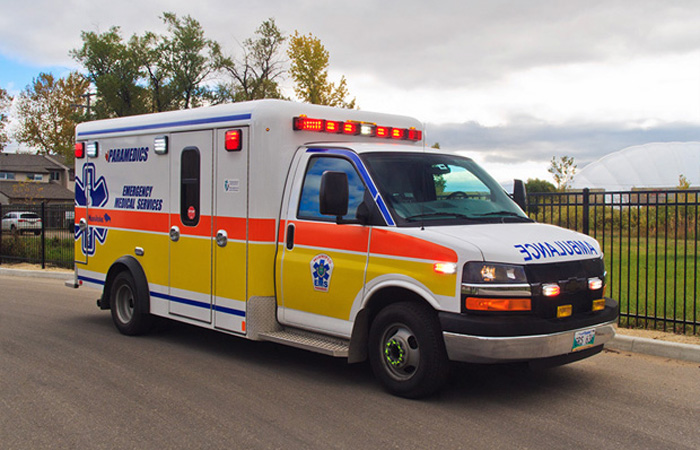Ambulance fees have been reduced by $85 as part of the Manitoba government’s continuing efforts to deliver more affordable emergency service to families throughout the province.
“Manitobans going through a potentially life-threatening situation should not have to worry about whether they can afford an ambulance before calling for one,” said Premier Brian Pallister. “Our government continues to address that concern for Manitobans. We have reduced ambulance fees by 35 per cent in the past two years as we work toward meeting our promise of cutting those bills in half by 2020.”
Initially announced in last month’s budget, the fee reduction took effect on April 1. The new price, down from $425, marks a 20 per cent reduction in the bill Manitobans receive for ambulance service, with customers paying either $340 or the pre-existing base fee established by the service provider, whichever is lower. This represents an average total decrease of $182 since 2016, when the average ambulance fee was $522.
Ambulance service costs are the responsibility of the patient in jurisdictions across the country, as these services are outside the scope of The Canada Health Act. In Manitoba, land ambulance services are delivered by a combination of providers including regional health authorities, municipalities and First Nation communities.
The government will continue to work with its partners in the regional health authorities and with other ambulance providers to ensure consistent, reliable and affordable care for Manitobans, said Steinbach MLA and Health, Seniors and Active Living Minister Kelvin Goertzen.
“Manitobans deserve to have predictable, reliable ambulance services right across the province,” said Goertzen. “As we move forward with the implementation of the recommendations of the 2013 EMS Review, we’ll be able to better locate the services and match resources to get an ambulance where you need it when you need it.”
The minister noted the reduced costs for ambulance service will allow more Manitobans to access care in a timely manner at a more affordable price.
“Paramedic care has evolved to the point where we are now providing definitive treatment in homes and communities across Manitoba,” said Cameron Ritzer, chair, Paramedic Association of Manitoba. “The government’s ongoing commitment to reduce ambulance fees ensures cost is not a barrier and increases the public’s access to paramedic services when they need it most.”
Ambulance fees vary by the provider offering the service. Client fees are used to offset the cost of operations, with the remainder of costs subsidized by the province and other organizations.
The province already provides coverage for certain ambulance services including:
- inter-facility transfers between health-care facilities;
- the Northern Patient Transportation Program, which subsidizes medically necessary transportation for residents in the north;
- helicopter transportation to patients requiring critical and emergent care within a 250-kilometre radius of Winnipeg; and
- the Lifeflight Air Ambulance program, which provides specialized inter-facility transport for critically ill or injured Manitoba residents who live further than 200 km from Winnipeg.
“Ambulance costs can be a major burden for many Manitobans including seniors on fixed incomes,” said Tom Farrell, president, Manitoba Association of Senior Centres. “Seeing this important issue addressed in a meaningful way by this government is welcome news that will help many Manitobans.”
Goertzen noted Manitoba Health, Seniors and Active Living will continue to work with representatives from the regional health authorities to further reduce fees over the next two years.




